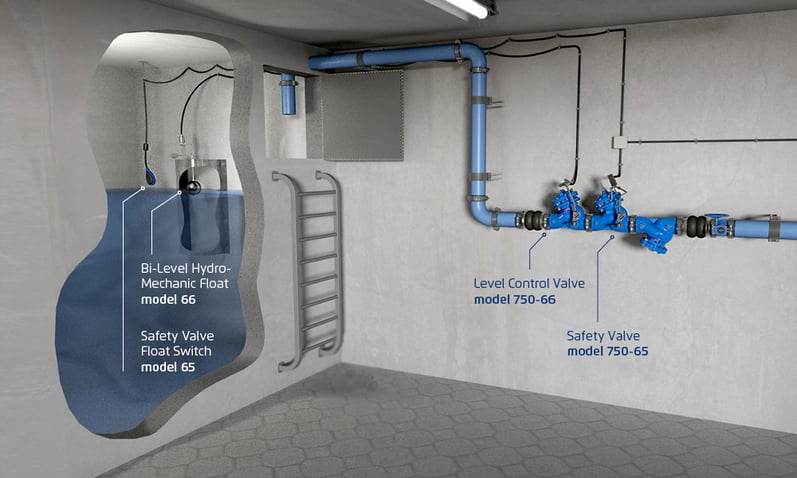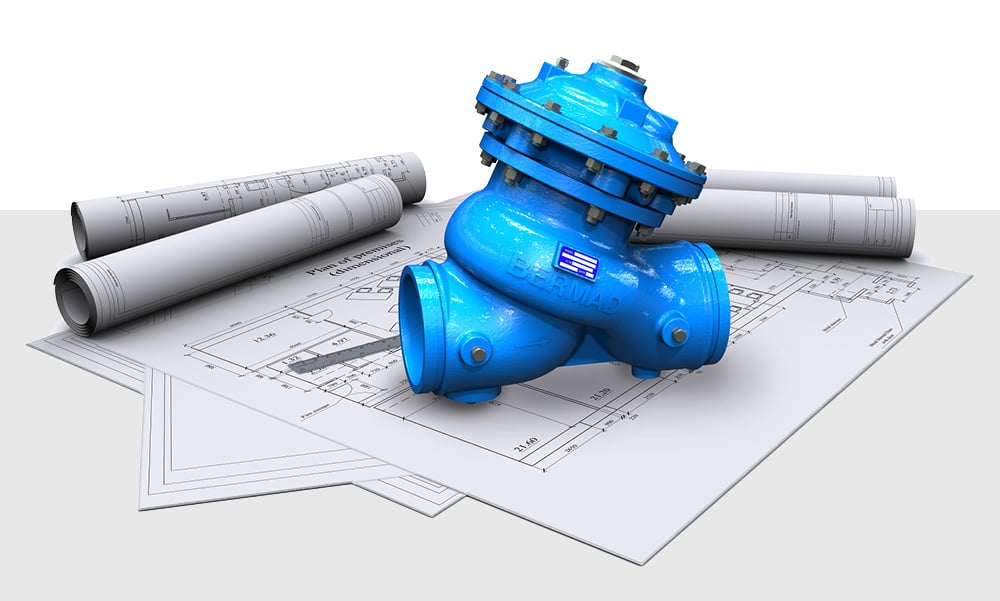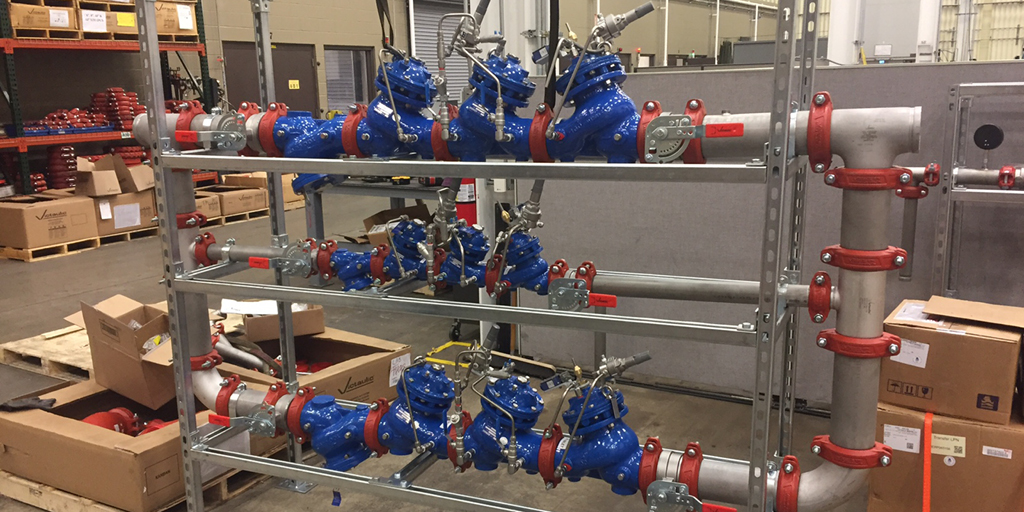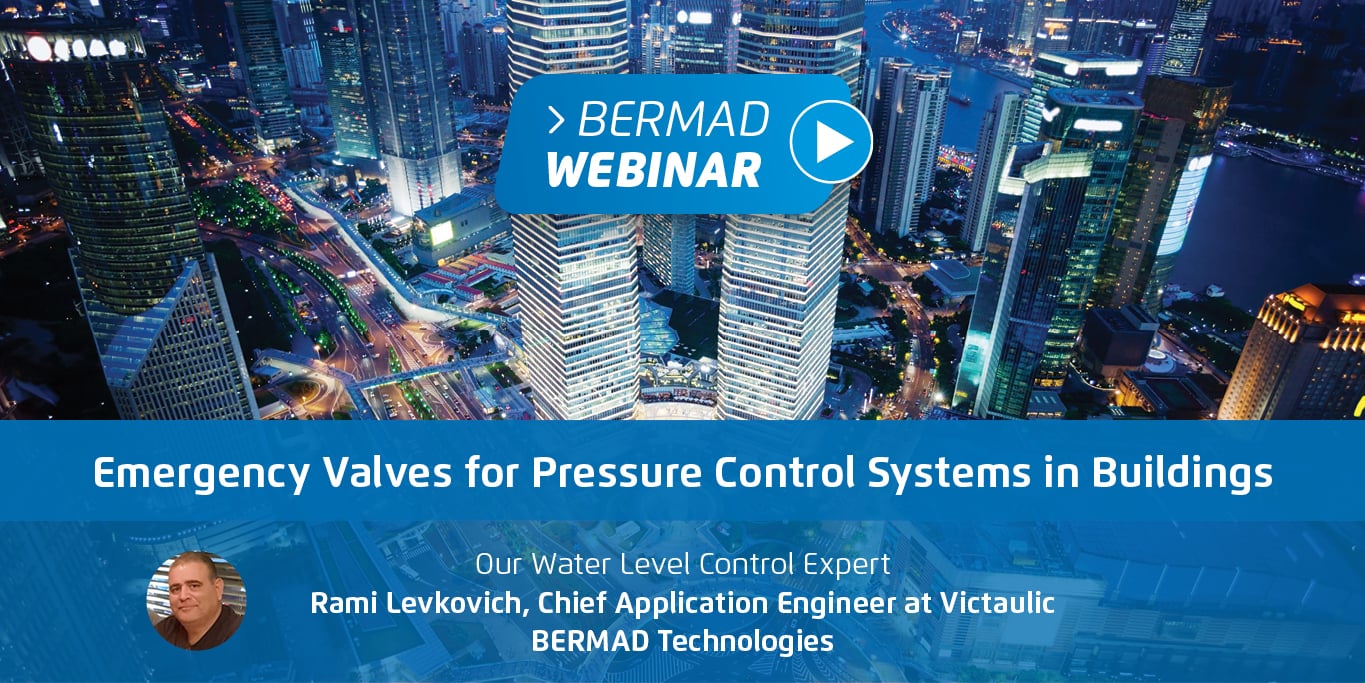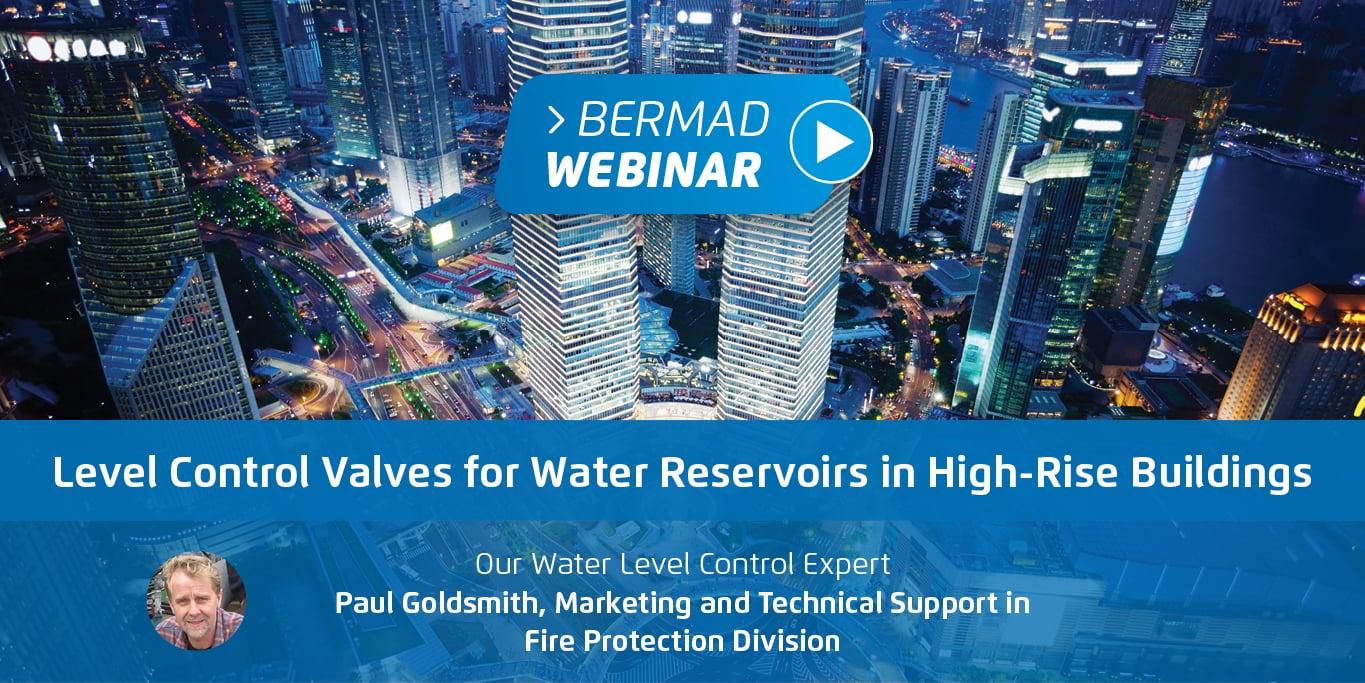Water supply systems on highrise buildings, including their control valves, are required to operate trouble-free and with minimal maintenance for many years. Therefore, selecting the most appropriate control valves models and integrating safety valves into the various systems from the very first planning stages is essential to ensure compliance with such a requirement.
Safety valves in pressure reduction systems:
Pressure reducing valves (PRVs) should be installed wherever water high pressures need to be reduced to values fitting the connections in the consumer network and the local pressure code. Very often, those PRVs must operate in harsh conditions, causing excessive wear and leading eventually to a faulty performance.
As previously pointed out, suitable model selection allows for continuous and reliable operation for many years; nevertheless, even control valves of the best quality might sometimes fail. Such failure would allow high pressure into the consumer network connections, exposing the water system’s pipes, as well as attached appliances and other accessories, such as toilet tanks, taps and faucets, to serious damage.
Installing safety valves to ensure proper system operation even in case of failure in the pressure reducing valve is highly recommended. Safety valves may be installed upstream or downstream from the pressure reducer and remain fully open in standby position while sensing the system’s downstream pressure. The safety valve should be set to step in and take over whenever downstream pressure increases 1.0 bar above the original set pressure.
In order to ensure proper operation of the safety valve after remaining open for a long time, a double chamber valve, characterized by a strong closing force, should be installed. Once activated, the safety valve will alert the building management system, or any other alarm mechanism connected to it, by means of a dedicated valve position sensor.
Valve combo: BERMAD model 72S – including a pressure reducing valve BERMAD model 720 and a safety valve BERMAD model 720-X.
Single valve to be installed in series with the PRV: BERMAD model 720-X.
Pressure Reducing System with Safety Valve – “Watchdog System”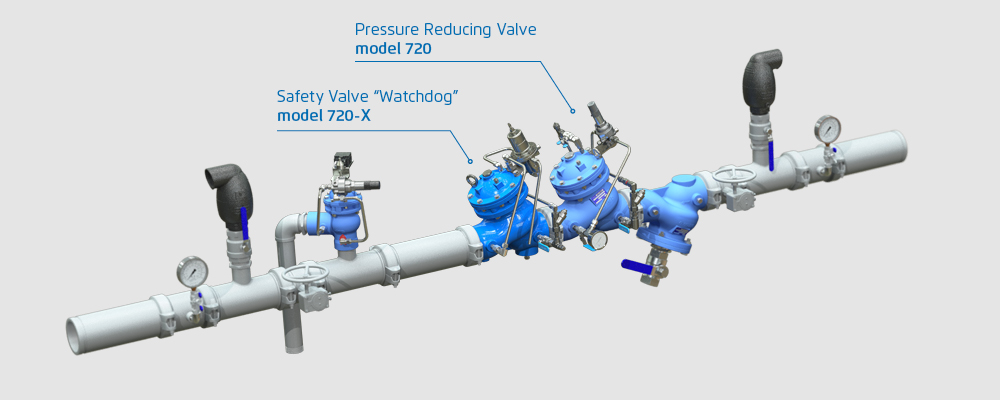
Safety valves in reservoir filling systems:
Reservoir filling valves are usually installed on the filling pipe. They are supposed to allow water flowing into the reservoir as necessary and close to prevent overflow whenever the reservoir is full.
The prevalent practice for this application is to install hydraulic valves operated by hydro-mechanic floats or electric solenoids with the addition of level-sensing accessories (float switch, ultrasonic sensor, et cetera).
Any failure preventing the closing of the valve may lead to overflow with consequential damages to the electrical systems and other assets, as well as threatening human lives. The way to prevent such events is to install a safety valve on the system. The safety valve is a normally open valve installed on the same line with the main filling valve; its command mechanism will be calibrated to close the main valve whenever the level in the reservoir exceeds the allowed maximum altitude.
It is recommended that, if the main filling valve is actuated by a hydro-mechanic float, the safety valve should be electrically operated and vice versa. In order to ensure proper operation of the safety valve after remaining open for a long time, a double chamber valve, characterized by a strong closing force, should be installed. Once activated, the safety valve will alert the building management system, or any other alarm mechanism connected to it, by means of a dedicated valve position sensor.
Electrically operated safety valve: BERMAD model 750-65
Hydro-mechanic Level Control Valve with Bi-Level Vertical Float BERMAD model 750-66
Reservoir Level Control System with Safety Valve